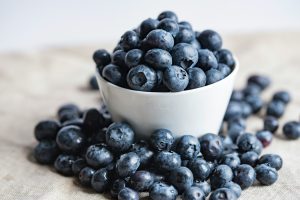The revised figures show a moderate increase in both apple and pear production, reaching around 11 million tonnes of apples and just over 1.8 million tonnes of pears. The adjustment is mainly due to favourable late-summer weather conditions, which improved fruit sizing and colouring for mid- and late-season varieties. While production is slightly higher than initially expected, total volumes remain well below the full potential (13 million tonnes for apples and more than 2 million tonnes for pears), confirming a medium-to-low crop for the 2025/2026 season.
The updated estimate raises apple production from 10.4 million tonnes forecast in August to between 10.9 and 11 million tonnes, an increase of about 5%. Pear production has also grown slightly to above 1.8 million tonnes. For apples, this remains the sixth largest harvest of the decade, far below the 2018 record (13.2 million tonnes). For pears, it is the third consecutive low crop and the fourth smallest of the decade, still well below the 2010 peak (2.7 million tonnes).
This improvement follows a challenging spring marked by late frosts, weak pollination and early drought. The recovery is mainly attributed to the favourable weather at the end of the growing season. The largest upward revisions were recorded in Poland (+400,000 t), Germany (+60,000 to +80,000 t), Belgium (+20,000 t), the Netherlands (+10,000 t) and France (+20,000 t). For pears, the main increases come from Belgium (+25,000 t), the Netherlands (+10,000 t) and France (+10,000 t), partially offset by a new decline in Italy (-9,000 t).
According to WAPA, these adjustments reflect normal seasonal variations resulting from the weather conditions until the end of the harvest in November.
RELATED NEWS: Stability in European apple production does not ease concerns
“Although the harvest is slightly higher than expected, the European apple and pear market remains well balanced,” stated Philippe Binard, speaking on behalf of Prognosfruit. “Production remains below potential, stocks are clean, and export openings suggest a season with positive prospects.”
Despite a slow start caused by high domestic supply and cautious consumer behaviour, the market is now performing well, supported by steady internal demand and new export opportunities. European exports have increased by around 20% year-on-year, driven by lower Turkish production and stronger demand from the Middle East, India, North Africa and Southeast Asia, despite logistical challenges in the Red Sea and the weak euro.
The sector continues to face rising production costs, emerging phytosanitary risks and the need to boost consumption, while adapting to evolving consumer habits and competition from other fruit categories.
Apples and pears remain flagship fruits for the European market, and WAPA underlined that the sector’s long-term strength will depend on the direction of the EU agricultural strategy and the upcoming CAP reform, which are essential to ensure competitiveness and generational renewal.
The next edition of Prognosfruit will take place in Constance, Germany, from 5 to 7 August 2026.



















